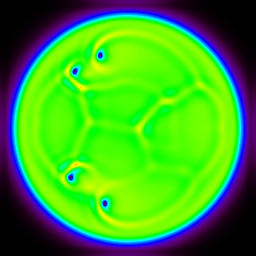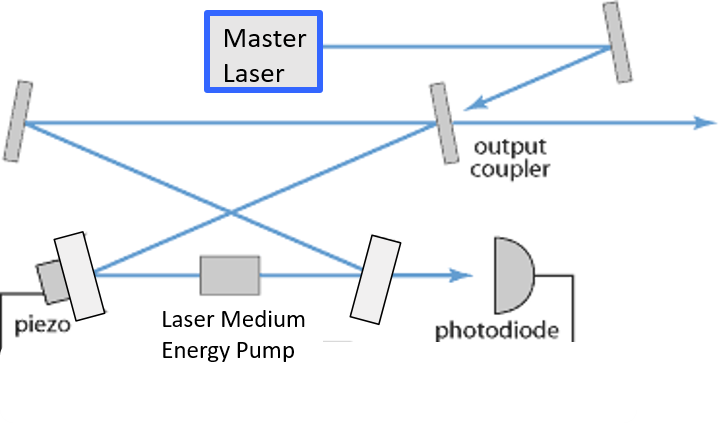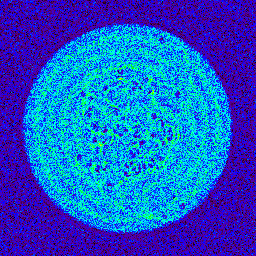Solid-state and gas lasers
Many lasers use solid state materials, crystals and gases to produce stimulated emission inside optical cavities. Prototypical examples for solid-state lasers are the Nd:YAG (neodymium-doped yttrium aluminium garnet) and semiconductor lasers while He-Ne, CO2 and Argon-ion are the most commonly used gas lasers. One advantage of theoretical methods based on the Maxwell-Bloch equations is that by changing the model parameters one can simulate and study a large variety of different laser devices. A typical diagram of these photonics devices is shown in Figure 1 where the laser is subject to the action of an external injection.
|
|
 |
|
| Fig. 1: A laser medium in an optical resonator with optical injection from a master laser | Movie 1: Creation and annihilation of optical vortices in a laser beam | Movie 2: Vortex induced turbulence in a laser beam |
Recently we have shown that for a wide range of laser devices under the action of an optical injection from a master laser, the output beam can develop optical vortices that create and annihilate (Movie 1) and lead to optical turbulence (Movie 2). In the presence of vortex-mediate turbulence, rogue waves, i.e. sudden intensity peaks that are much higher that the averaged power, can develop and channel the optical energy in extremely small filaments.
Recent References
C. J. Gibson, A. M. Yao and G.-L. Oppo, “Optical Rogue Waves in Vortex Turbulence”, Phys. Rev. Lett. 116, 043903 (2016).
G.-L. Oppo, A. M. Yao and D. Cuozzo, “Self-organization, pattern formation, cavity solitons, and rogue waves in singly resonant optical parametric oscillators”, Phys. Rev. A 88, 043813 (2013).

